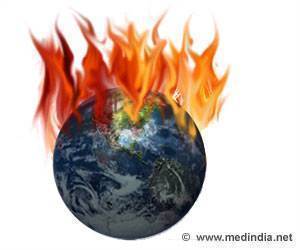The IPCC has urged every individual in the developed countries to reduce the meat consumption by 50 percent by 2050 to curb the most potent of greenhouse gas emissions.

N2O is the third highest contributor to climate change behind carbon dioxide (CO2) and methane (CH4); however, it poses a greater challenge for mitigation since nitrogen is an essential element for food production. It is also the most potent of these three greenhouse gases, as it is a much better absorber of infrared radiation. But total anthropogenic emissions are about 6 million metric tons of nitrogen as N2O, compared to 10 billion metric tons of carbon as CO2.
The main sources of N2O in the atmosphere are due to the spreading of synthetic nitrogen fertilizers onto agricultural soils and the use and storage of livestock manure. The nitrogen contained in fertilizers and manure is broken down by microbes that live in the soil and released into the atmosphere as N2O. In order to reduce emissions, it will be necessary to apply certain changes to the food production process.
Dr. Davidson believes that this can be achieved through improved management of fertilizer and manure sources, as well as through reduction of the developed world’s per capita meat consumption that will relieve pressure on fertilizer demand and reduce growth in the amount of manure being produced. “We have the technical know-how and the tools to greatly improve efficiencies of fertilizer use in agriculture,” states Davidson, “although several economic and political impediments often stand in the way of their adoption.”
In a draft of the IPCC's Fifth Assessment Report, four scenarios, known as representative concentration pathways (RCPs), have been adopted, and these represent possible means of reductions for a number of greenhouse gases. Dr. Davidson evaluated the scale of changes needed to meet the predicted N2O pathways.
Three of the IPCC’s less aggressive scenarios could be met by reducing meat consumption, improving agricultural practices, or reducing emissions from industry. The most aggressive scenario, where atmospheric N2O concentrations stabilize by 2050, can only be met if a 50 percent reduction, or improvement, is achieved for each of the above.
Advertisement
Assessing the likelihood of reducing meat consumption in the developed world by 50 percent, Davidson said, “If you had asked me 30 years ago if smoking would be banned in bars, I would have laughed and said that would be impossible in my lifetime, and yet it has come true. Similarly, there would be beneficial health benefits for most Americans and western Europeans to stop ‘supersizing’ and rather to reduce portion sizes of red meat.”
Advertisement
Source-Newswise











